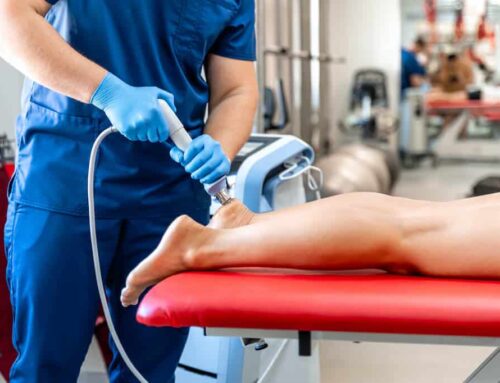Did you just read the title and think of that bad side of your body that you always seem to have physical issues with? Be honest. Now think about what that title would have caused you to think of when you were a kid. Most of us as kids had no concept of lingering injuries or pains. If we got an injury it was a temporary state. The words “bad side” would have been more likely to be interpreted as the side of you that misbehaved and got into trouble. While this may seem like a bit of a silly introduction to a blog this is an important distinction to make and can potentially influence your physical well-being for the rest of your life. Your brain is a powerful tool that can directly influence how your body interacts with the environment. If you have a “bad side” that you avoid using because you fear injury, or just know that it doesn’t quite work right, it’s time to figure out why. One thing is for certain. Avoiding the use of the side and avoiding activities because you fear the consequences will surely accelerate the aging process.
We’re going to discuss three simple tests that you can use to determine if you have an imbalance in the way that you move. These tests may seem very simple and that’s because they are. If you notice a difference in your side to side movement with these light tasks then surely when you’re doing more complicated tasks these differences will be more pronounced, and over time, lead to injury. The beauty of the three tests we’ll look at today is that no matter what level or type of athlete you are, the weekend warrior, the occasional exerciser, or the die-hard, these tests have useful information for you – and can help you figure out how to turn your “bad side” into the good side.
Overhead with bar
- This first test will look at the way that you use your shoulders and arms.
- Indicates overuse of upper traps, could be pec minor tightness and lead to neck pain
Squat with tape
- This test looks at the way you’re likely to lift objects, get out of a chair, etc. It measures how much of one hip you tend to use over the other. Using one side more consistently for longer increases the amount of force through the joints on that side and may contribute to faster degeneration due to overuse.
Single leg balance
- This test measures the function of your ankle/foot and hip to maintain your balance. If you notice balance differences side to side that can indicate that either the hip is unstable or the ankle is. Watch your knee as you do this test, it may be helpful to put a piece of tape up and down your thigh.
Overhead with a bar
It’s as easy as the name implies. First, stand in front of a mirror, then take something long like a PVC pipe, broomstick, or yardstick. Hold it with your hands just outside of your hips, then lift it over your head. Look at the “windows” created between your arm and your head. Are they equal on both sides or do you shrug one shoulder up? If the window is different from one side to the other, or you notice that both shoulders raise up towards your head, this is an imbalance.
Squat with tape
You’ll need a full length mirror for this test. Go ahead and place a thin piece of tape vertically along your mirror. We suggest that you use painter’s tape or another type of tape that will come off easily and not ruin the mirror. Now step back and after you’re done admiring yourself line yourself up with the piece of tape in a squat position. The tape should be long enough to go from your nose, through your belly button and down between the middle of your ankles when looking in the mirror. Now, squat! If you squat correctly you should see that you squat evenly and (depending on your strength level) get your thighs parallel to the ground. Regardless of how low you go, you should not see more than half your body on either side of the tape. If you see yourself deviate that indicates an imbalance. It could be habit, but it could also be restriction in your ankle, knee, or hip.
Single leg balance
It’s that easy. Put a piece of tape vertically down the center of your thigh. If you’re using clear tape draw a dark line down the center with a sharpie. Now stand in front of a mirror. Pick one of your feet up to balance on one leg while keeping your eye on the tape of the leg that you’re going to balance on. What should happen is the tape should not move side to side. You should also be able to balance on either leg evenly without obvious differences. You should not have to lean to one side, flail your arms, or hop around. If this sounds like you, there’s something missing. Balance has become one of those things people write off as “just getting older.” This is flat out wrong. If you consider that when walking you are relying on one leg to hold you up most of the time, if you cannot balance on one leg, or there is a difference, then you can be certain that in order to walk your body is doing a lot of compensating.
If you completed the above tests without any compensation this is something to celebrate! If you’re in the group of people that does have compensations, rest assured you’re in good company and definitely the majority. The best thing for you to do is work on these imbalances.
For the overhead with a bar test you can see our videos on scapular stability
Squat with tape, have a look at some of our ankle and hip mobility videos.
For single leg balance try some of our hip strengthening drills.
After a couple of weeks of these exercises re-test yourself. Are you any better? If yes, that’s fantastic! Continue on. If you’re not, be sure to
We can help detect the true cause of your imbalances and approach your specific issues with sniper-like accuracy.
Squat with tape, have a look at some of our ankle and hip mobility videos.
For single leg balance try some of our hip strengthening drills.
After a couple of weeks of these exercises re-test yourself. Are you any better? If yes, that’s fantastic! Continue on. If you’re not, be sure to
.
We can help detect the true cause of your imbalances and approach your specific issues with sniper-like accuracy.
blog image: https://www.halcyontherapycentre.co.uk/the-devil-and-the-angel-on-your-shoulder/



